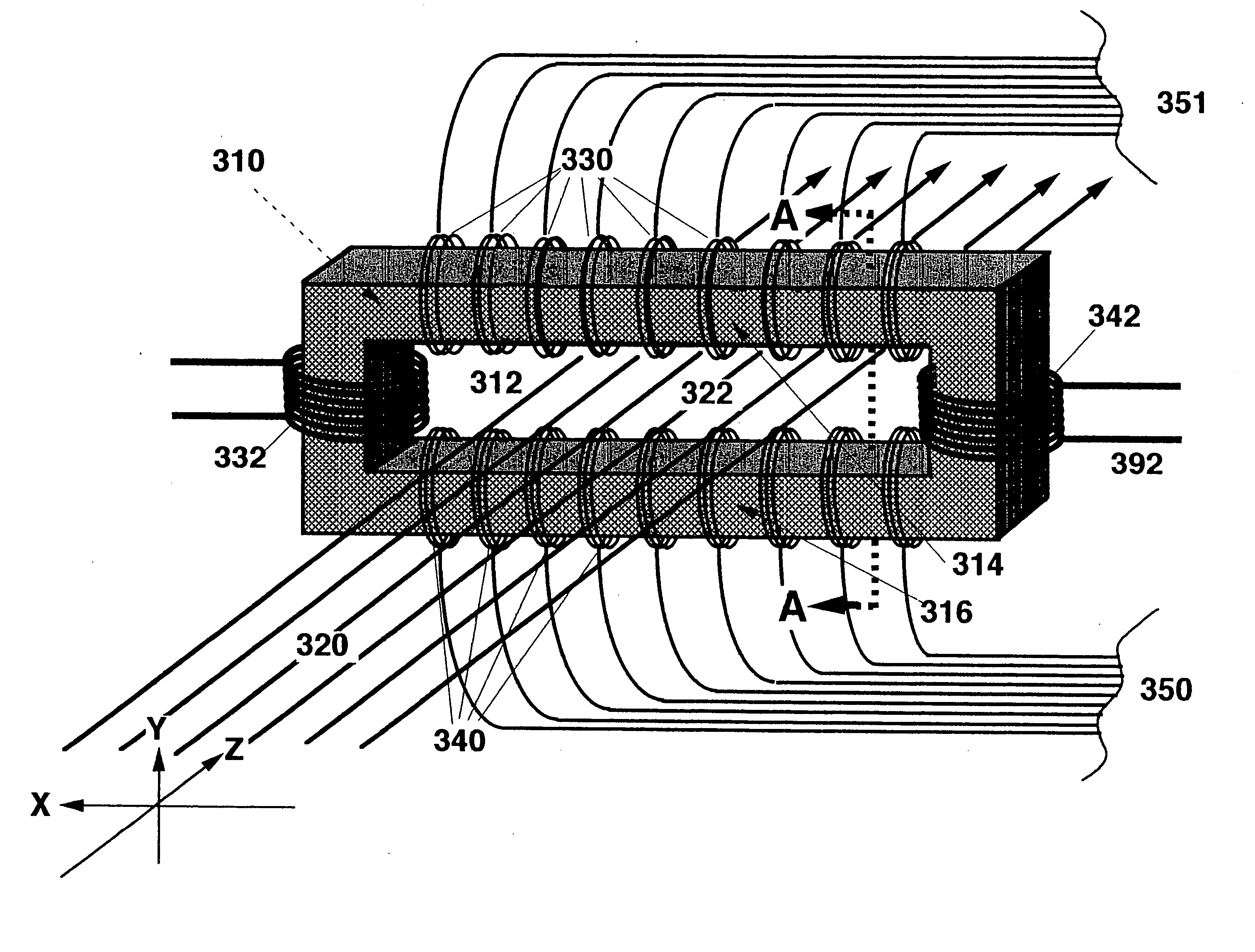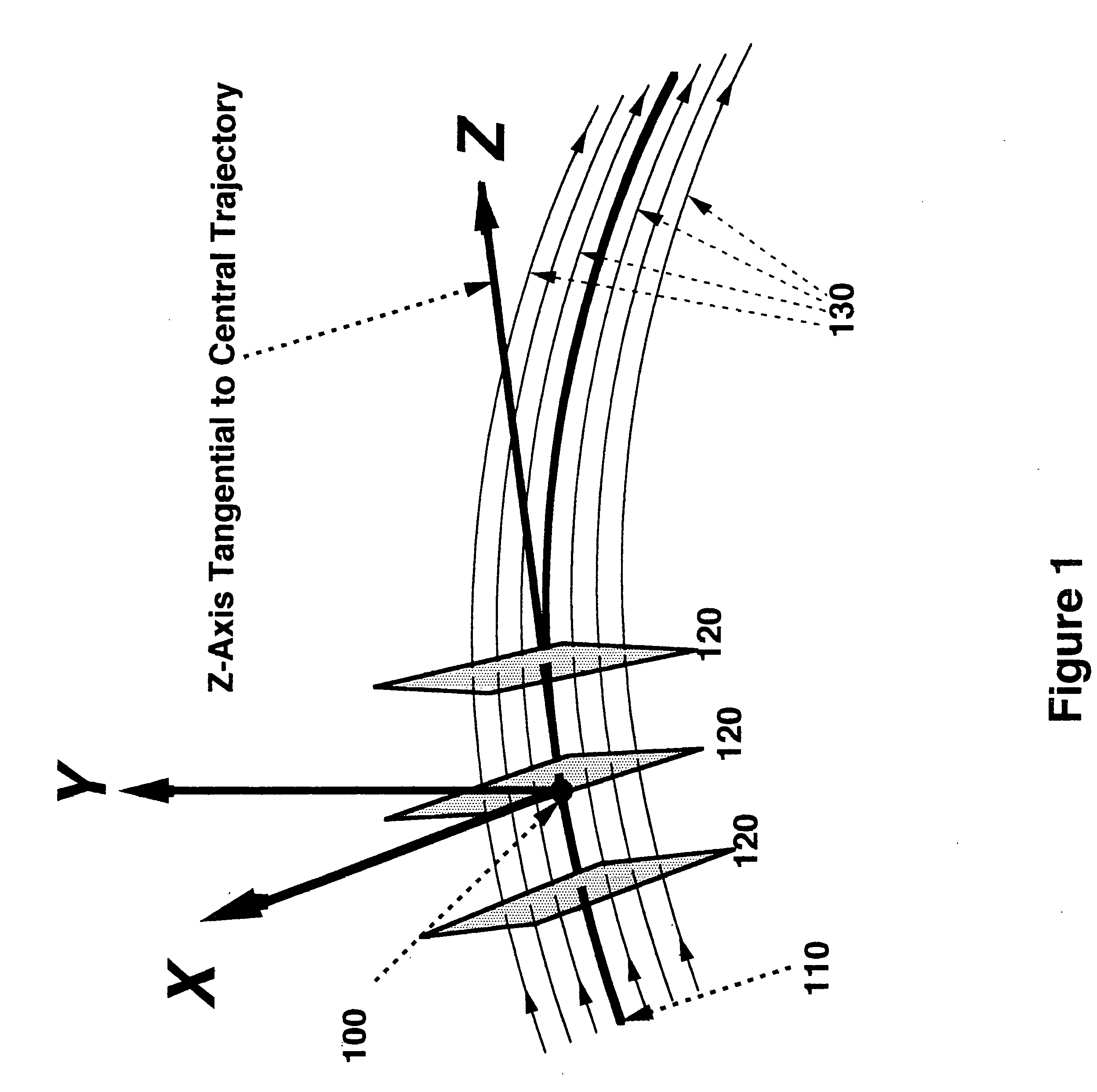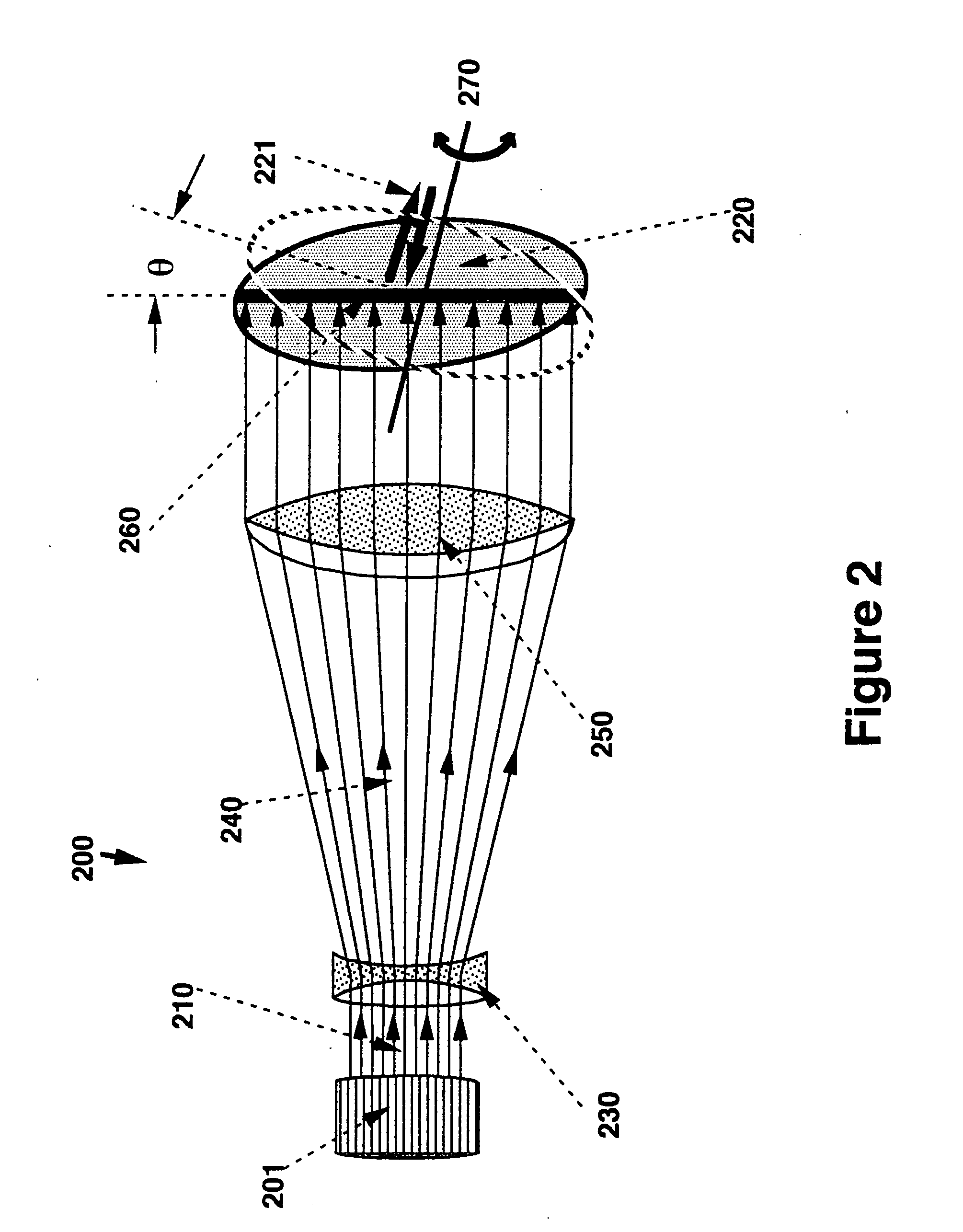Controlling the characteristics of implanter ion-beams
a technology of implanter ion beams and characteristics, applied in the field of control of implanter ion beam characteristics, can solve the problems of active control, generating dipole field contributions, and inability to achieve full-length ribbon extraction, etc., and achieve the effect of eliminating magnetic short circuits
- Summary
- Abstract
- Description
- Claims
- Application Information
AI Technical Summary
Benefits of technology
Problems solved by technology
Method used
Image
Examples
Embodiment Construction
[0042] The unique properties of the system according to the present invention will be better elucidated by reference to a practical example. In this example, a pair of quadrupole lenses are used to expand an initially parallel set of beamlets to a broader set of parallel beamlet trajectories.
[0043]FIG. 1 illustrates the beam coordinate system used in the following discussions. Three representative sections, 120, across a ribbon beam are shown. The X-axis is always aligned with the surfaces, 120, at right angles to the beamlets, 130, comprising the ribbon beam and along the surface's long axis. The Z-axis, 110, is tangential to the central trajectory, of the ribbon beam and remains coincident with the central trajectory throughout the length of the ion optical transport system, causing it to change direction as the central trajectory, 110, changes direction. At each point along the beam path the Cartesian Y-axis lies also in the surface, 120, and along the ribbon beam's cross-sectio...
PUM
 Login to View More
Login to View More Abstract
Description
Claims
Application Information
 Login to View More
Login to View More - R&D
- Intellectual Property
- Life Sciences
- Materials
- Tech Scout
- Unparalleled Data Quality
- Higher Quality Content
- 60% Fewer Hallucinations
Browse by: Latest US Patents, China's latest patents, Technical Efficacy Thesaurus, Application Domain, Technology Topic, Popular Technical Reports.
© 2025 PatSnap. All rights reserved.Legal|Privacy policy|Modern Slavery Act Transparency Statement|Sitemap|About US| Contact US: help@patsnap.com



